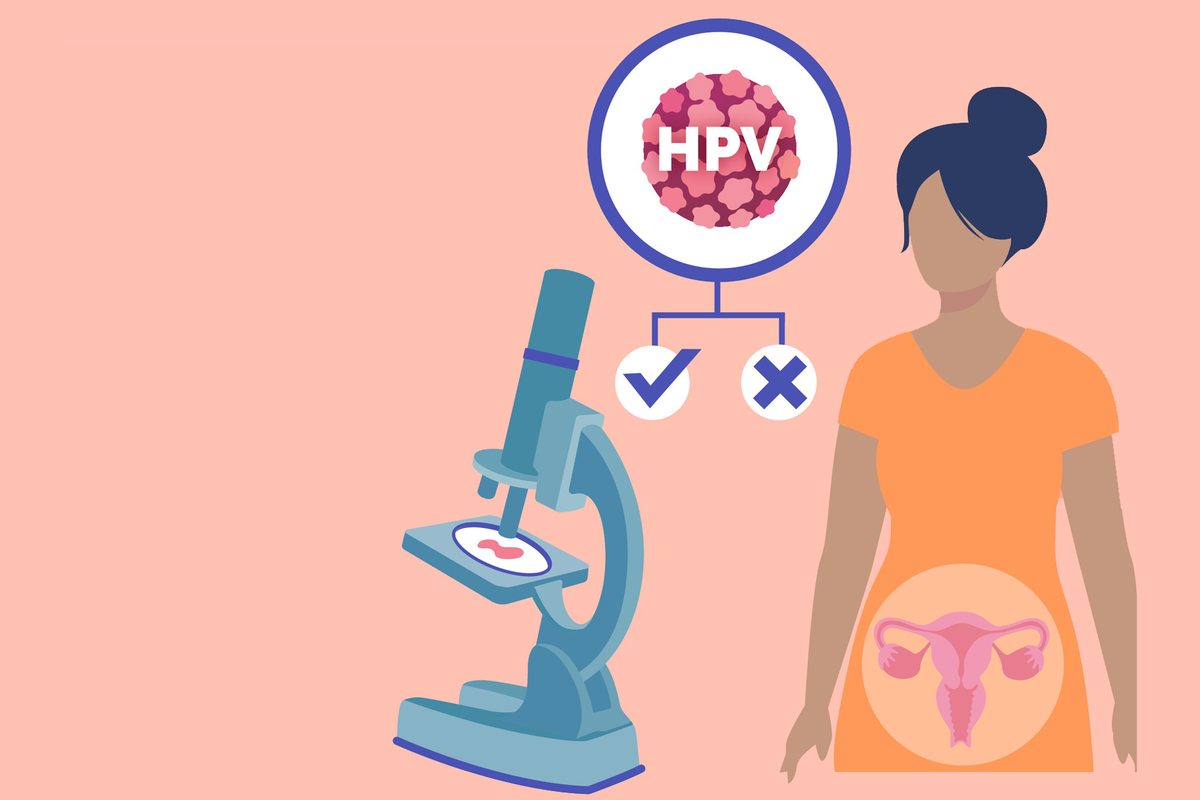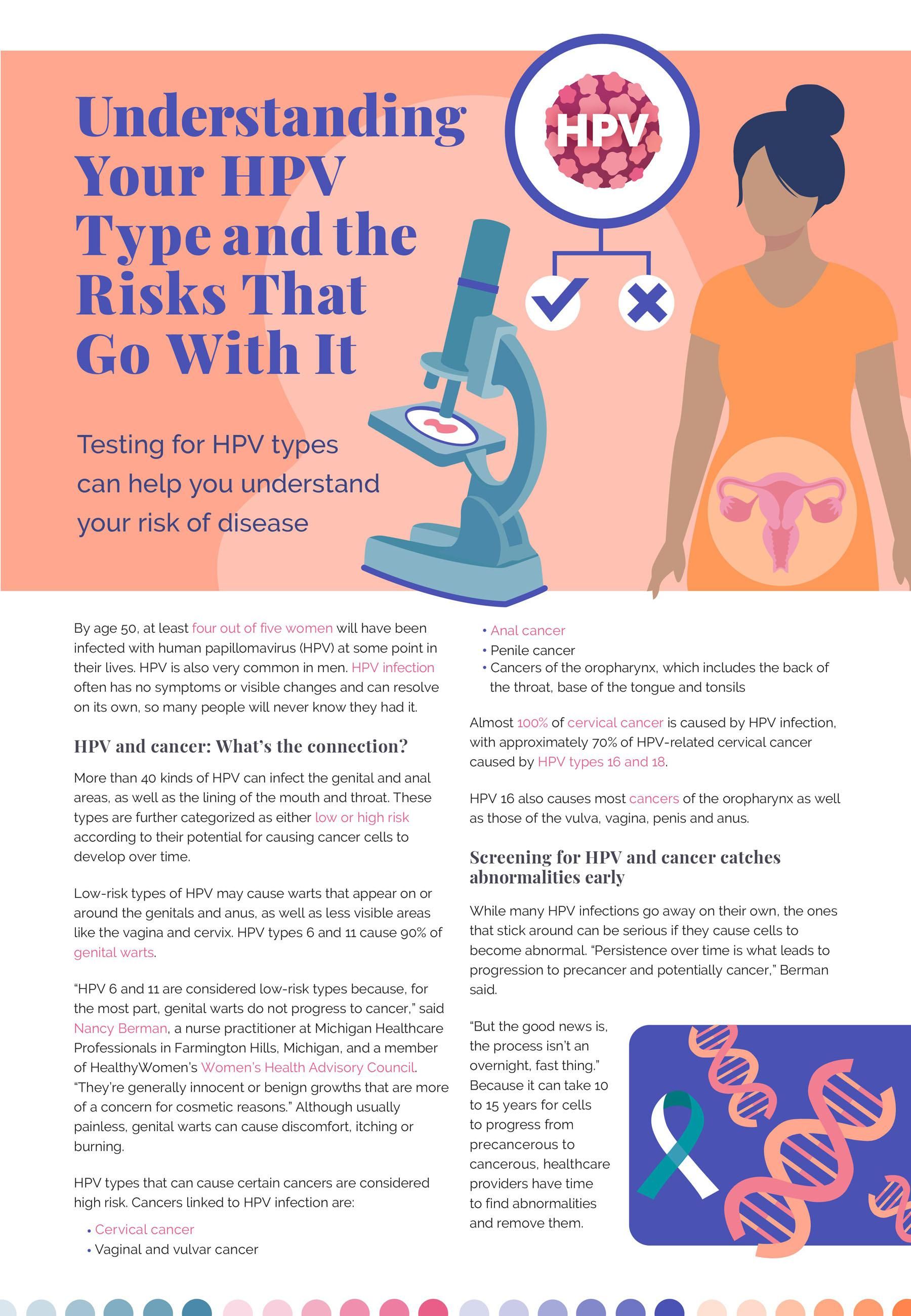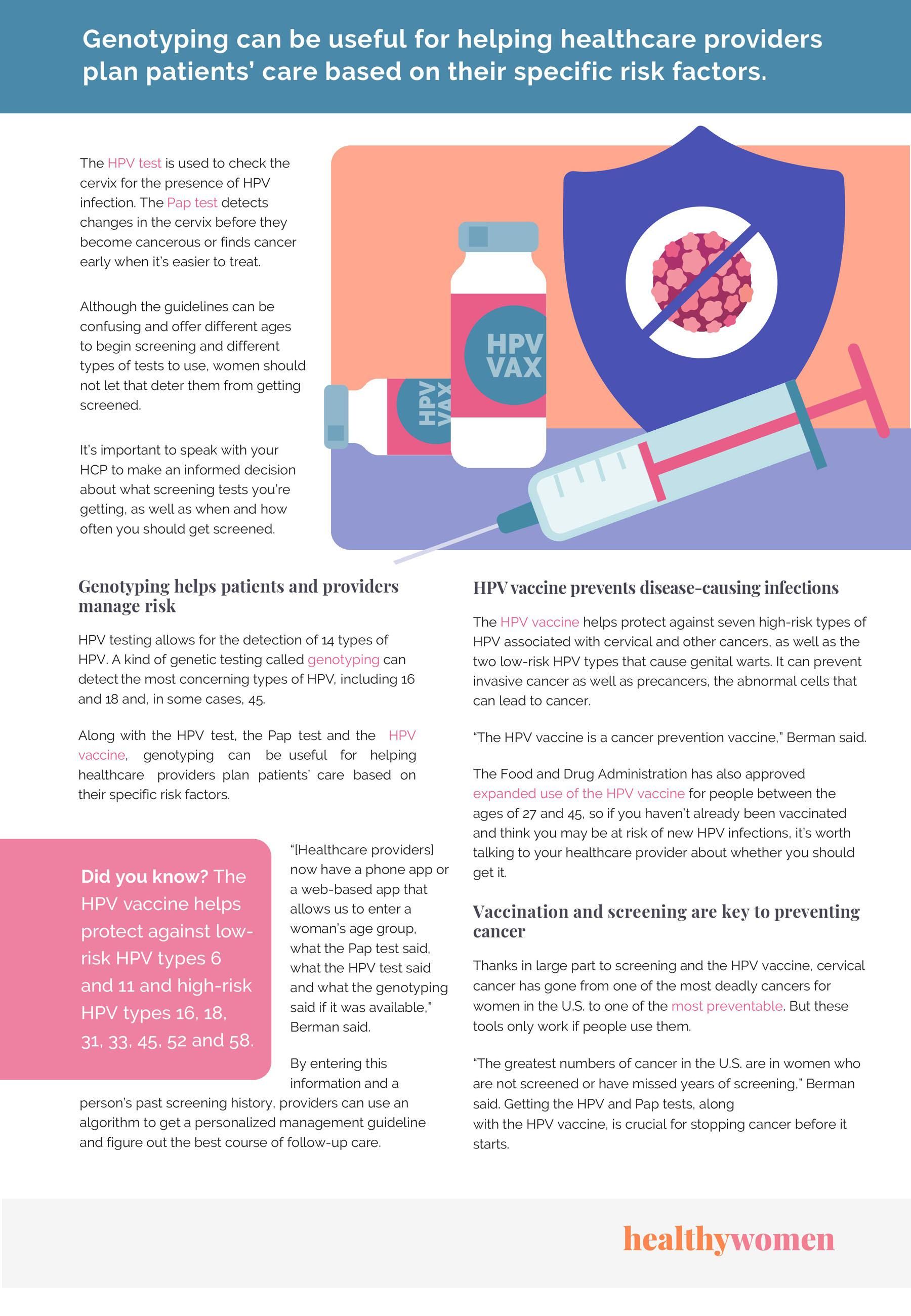Understanding Your HPV Type and the Risks That Go With It
Testing for HPV types can help you understand your risk of disease
By age 50, at least four out of five women will have been infected with human papillomavirus (HPV) at some point in their lives. HPV is also very common in men. HPV infection often has no symptoms or visible changes and can resolve on its own, so many people will never know they had it.
HPV and cancer: What’s the connection?
More than 40 kinds of HPV can infect the genital and anal areas, as well as the lining of the mouth and throat. These types are further categorized as either low or high risk according to their potential for causing cancer cells to develop over time.
Low-risk types of HPV may cause warts that appear on or around the genitals and anus, as well as less visible areas like the vagina and cervix. HPV types 6 and 11 cause 90% of genital warts.
“HPV 6 and 11 are considered low-risk types because, for the most part, genital warts do not progress to cancer,” said Nancy Berman, a nurse practitioner at Michigan Healthcare Professionals in Farmington Hills, Michigan, and a member of HealthyWomen’s Women’s Health Advisory Council. “They’re generally innocent or benign growths that are more of a concern for cosmetic reasons.” Although usually painless, genital warts can cause discomfort, itching or burning.
HPV types that can cause certain cancers are considered high risk. Cancers linked to HPV infection are:
- Cervical cancer
- Vaginal and vulvar cancer
- Anal cancer
- Penile cancer
- Cancers of the oropharynx, which includes the back of the throat, base of the tongue and tonsils
Almost 100% of cervical cancer is caused by HPV infection, with approximately 70% of HPV-related cervical cancer caused by HPV types 16 and 18.
HPV 16 also causes most cancers of the oropharynx as well as those of the vulva, vagina, penis and anus.
Screening for HPV and cancer catches abnormalities early
While many HPV infections go away on their own, the ones that stick around can be serious if they cause cells to become abnormal. “Persistence over time is what leads to progression to precancer and potentially cancer,” Berman said. “But the good news is, the process isn’t an overnight, fast thing.” Because it can take 10 to 15 years for cells to progress from precancerous to cancerous, healthcare providers have time to find abnormalities and remove them.
The HPV test is used to check the cervix for the presence of HPV infection. The Pap test detects changes in the cervix before they become cancerous or finds cancer early when it’s easier to treat.
Although the guidelines can be confusing and offer different ages to begin screening and different types of tests to use, women should not let that deter them from getting screened.
It's important to speak with your HCP to make an informed decision about what screening tests you’re getting, as well as when and how often you should get screened.
Genotyping helps patients and providers manage risk
HPV testing allows for the detection of 14 types of HPV. A kind of genetic testing called genotyping can detect the most concerning types of HPV, including 16 and 18 and, in some cases, 45.
Along with the HPV test, the Pap test and the HPV vaccine, genotyping can be useful for helping healthcare providers plan patients’ care based on their specific risk factors.
“[Healthcare providers] now have a phone app or a web-based app that allows us to enter a woman’s age group, what the Pap test said, what the HPV test said and what the genotyping said if it was available,” Berman said.
By entering this information and a person’s past screening history, providers can use an algorithm to get a personalized management guideline and figure out the best course of follow-up care.
HPV vaccine prevents disease-causing infections
The HPV vaccine helps protect against seven high-risk types of HPV associated with cervical and other cancers, as well as the two low-risk HPV types that cause genital warts. It can prevent invasive cancer as well as precancers, the abnormal cells that can lead to cancer.
Did you know? The HPV vaccine helps protect against low-risk HPV types 6 and 11 and high-risk HPV types 16, 18, 31, 33, 45, 52 and 58.
“The HPV vaccine is a cancer prevention vaccine,” Berman said.
The Food and Drug Administration has also approved expanded use of the HPV vaccine for people between the ages of 27 and 45, so if you haven’t already been vaccinated and think you may be at risk of new HPV infections, it’s worth talking to your healthcare provider about whether you should get it.
Vaccination and screening are key to preventing cancer
Thanks in large part to screening and the HPV vaccine, cervical cancer has gone from one of the most deadly cancers for women in the U.S. to one of the most preventable. But these tools only work if people use them.
“The greatest numbers of cancer in the U.S. are in women who are not screened or have missed years of screening,” Berman said. Getting the HPV and Pap tests, along with the HPV vaccine, is crucial for stopping cancer before it starts.
This resource was created with support from Hologic.
- Your Guide to HPV & Cervical Cancer ›
- HPV After 50? It's No Joke ›
- Stay Healthy With Pap and HPV Tests ›
- Ridding the World of Cervical Cancer - HealthyWomen ›
- HPV and Menopause: Are We Ever Out of the Woods ... ›
- Difference Between HPV Vaccine and HPV Test - HealthyWomen ›
- Living with HPV and Cervical Cancer - HealthyWomen ›
- Preventing HPV-Related Cancers Through Vaccination - HealthyWomen ›








